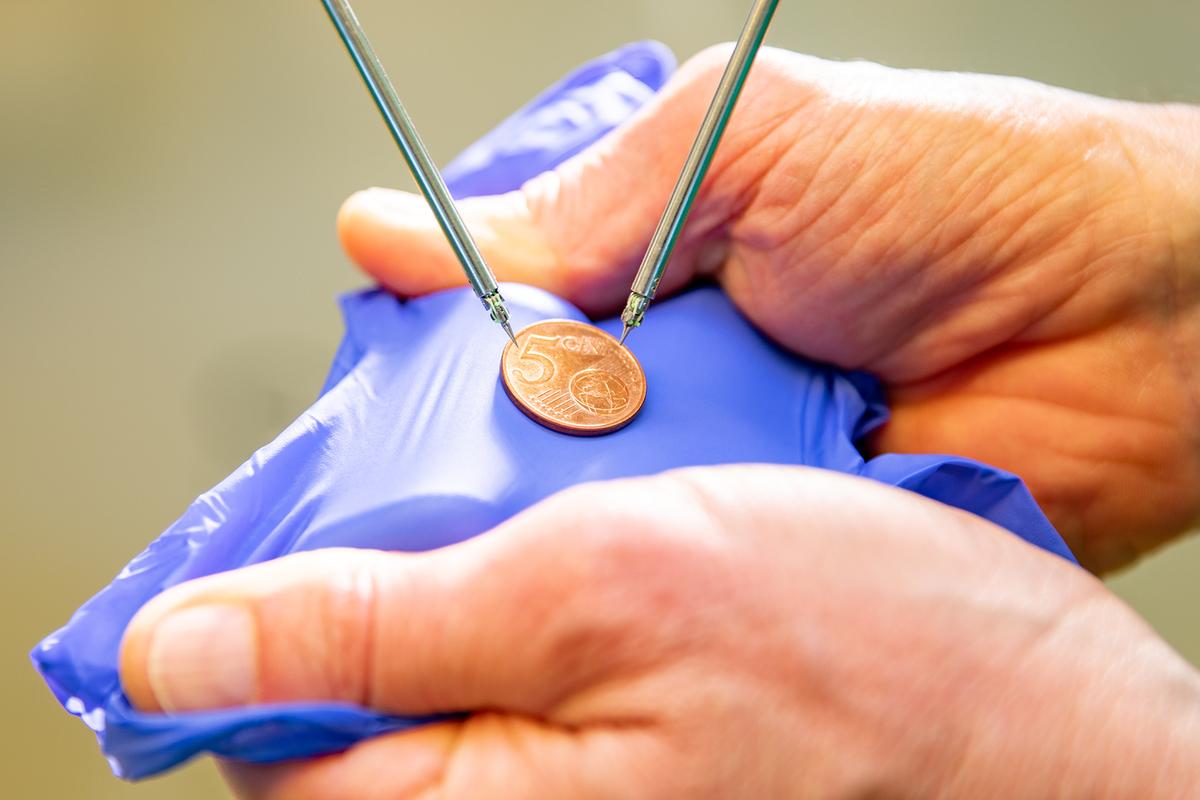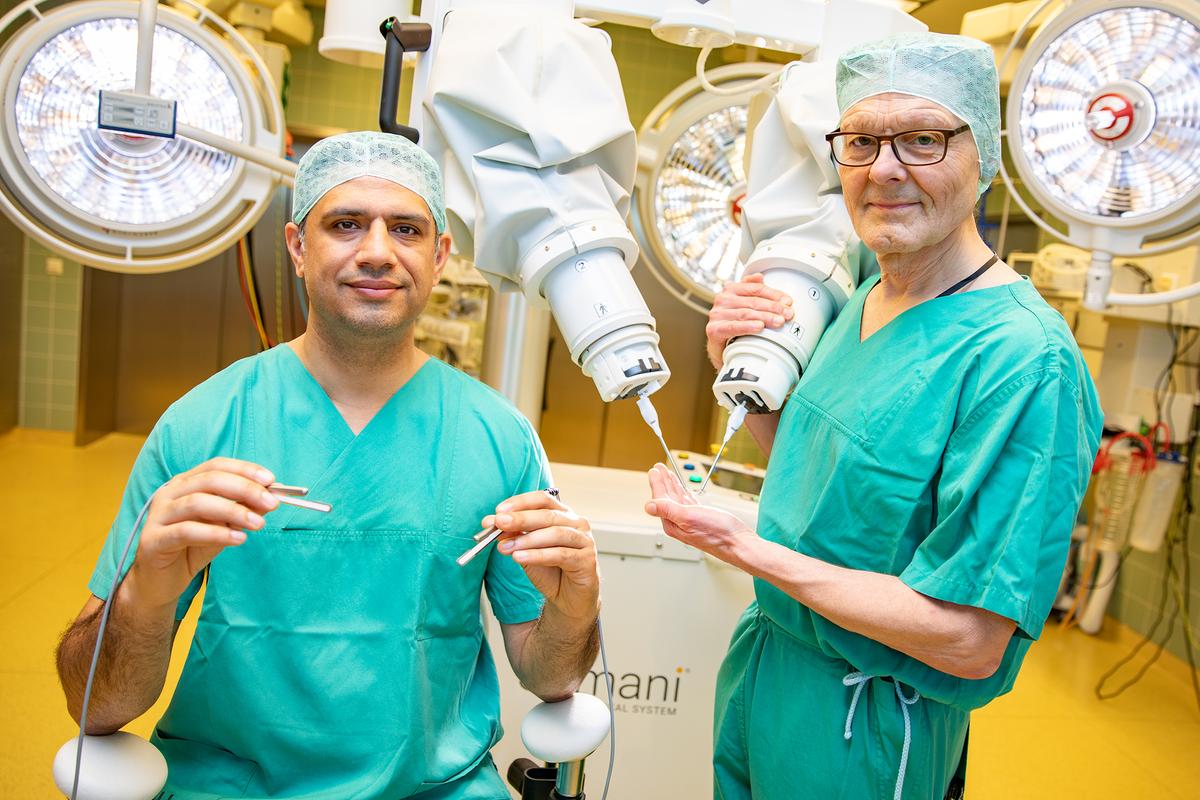New technology: MHH clinic uses special surgical robot for microsurgical procedures.

The surgical robot in microsurgery works with tiny instruments. Copyright: Karin Kaiser/MHH

PD Dr Dastagir (left) and Professor Vogt can perform even finer microsurgical procedures with the help of the surgical robot. Copyright: Karin Kaiser / MHH
Microsurgery is precision work in which, for example, the finest nerves and vessels are sutured under a microscope that magnifies many times over. This surgical method, which has been established for decades, is now being revolutionised by new technology. The ‘Symani Surgical System’ surgical robot, specially designed for microsurgery, makes it possible to perform previously impossible procedures on the smallest tissue structures. The Clinic for Plastic, Aesthetic, Hand and Reconstructive Surgery at Hannover Medical School (MHH) is one of the few clinics in Germany to work with this system. After about 45 operations using the innovative technology, Clinic Director Professor Dr Peter Maria Vogt says: ‘The surgical robot extends the boundaries of reconstructive surgery. Patients benefit from completely new surgical options, better healing and fewer complications.’
Finer and more precise
The new surgical technique allows surgeons to work much more finely and precisely than with conventional surgical procedures. ‘We can now suture the smallest vessels, nerves and lymphatic vessels with a diameter of 0.3 or even 0.2 millimetres. Previously, these had to have a diameter of at least one millimetre,’ explains PD Dr Khaled Dastagir. The senior consultant at the clinic is an expert in the field of robot-assisted microsurgery. He is enthusiastic about what is possible with the new technology. The clinic uses the microsurgical surgical robot for breast reconstruction after breast cancer, for sewing on severed fingertips or for tissue transplants, for example. It is now possible, for instance, to transplant even the smallest pieces of tissue with a precise fit, says PD Dr Dastagir.
Operation via joysticks
During procedures with the new surgical robot, the surgeon is not at the operating table as usual.He or she sits away from the operating theatre on a type of console chair and operates the robot arms using joysticks. The surgical field is displayed to him or her microscopically on two high-resolution monitors via a 3D AR headset with glasses.AR stands for augmented reality, which means that the images could be expanded in the future to include digital elements such as cross-sectional images, making the operation even more precise if necessary.The robotic arms perform the hand movements of the surgeon(s) on the joysticks with up to 20-fold miniaturisation on the operating table.Tiny instruments - tweezers and a needle holder - are used for this.
More flexible than a human hand
The capabilities of the microsurgical operating theatre robot are enormous. Unlike human hands, the ‘robot hands’ can rotate 360 degrees, making them much more flexible. They can also perform much smaller movements than a human hand. And finally, the surgical robot can eliminate any trembling and unwanted movement of the hands. ‘The surgical robot overcomes the movement limits of the human hand and thus enables interventions in the tenth of a millimetre range’, explains PD Dr Dastagir. Operations that were often not possible in microsurgery in the past are now technically feasible. One example: sewing on fingertips. ‘The probability that these will actually grow back after suturing increases to around 50 per cent thanks to the capabilities of the surgical robot,’ reports the surgeon.
System with great potential
Professor Vogt sees the future of microsurgery in the surgical robot. Not only does it expand surgical options, it also provides surgeons with an ergonomic workstation where they can concentrate on their work for long periods of time. ‘We have also found that handling the surgical robot is very easy to learn. The learning curve during training is steeper than with previous surgical techniques.’ The clinic director is convinced that the system has great potential. ‘We are delighted to have this new technology in our clinic and are very interested in developing it further.’
50 years of plastic surgery at the MHH
This year, the Department of Plastic, Aesthetic, Hand and Reconstructive Surgery is celebrating its 50th anniversary. The department was founded in 1974 and has enjoyed many successful and eventful years. The clinic is celebrating its anniversary on 14 June with a scientific symposium at which it will look back on the past years and look ahead to the challenges of the future.
Text: Tina Götting